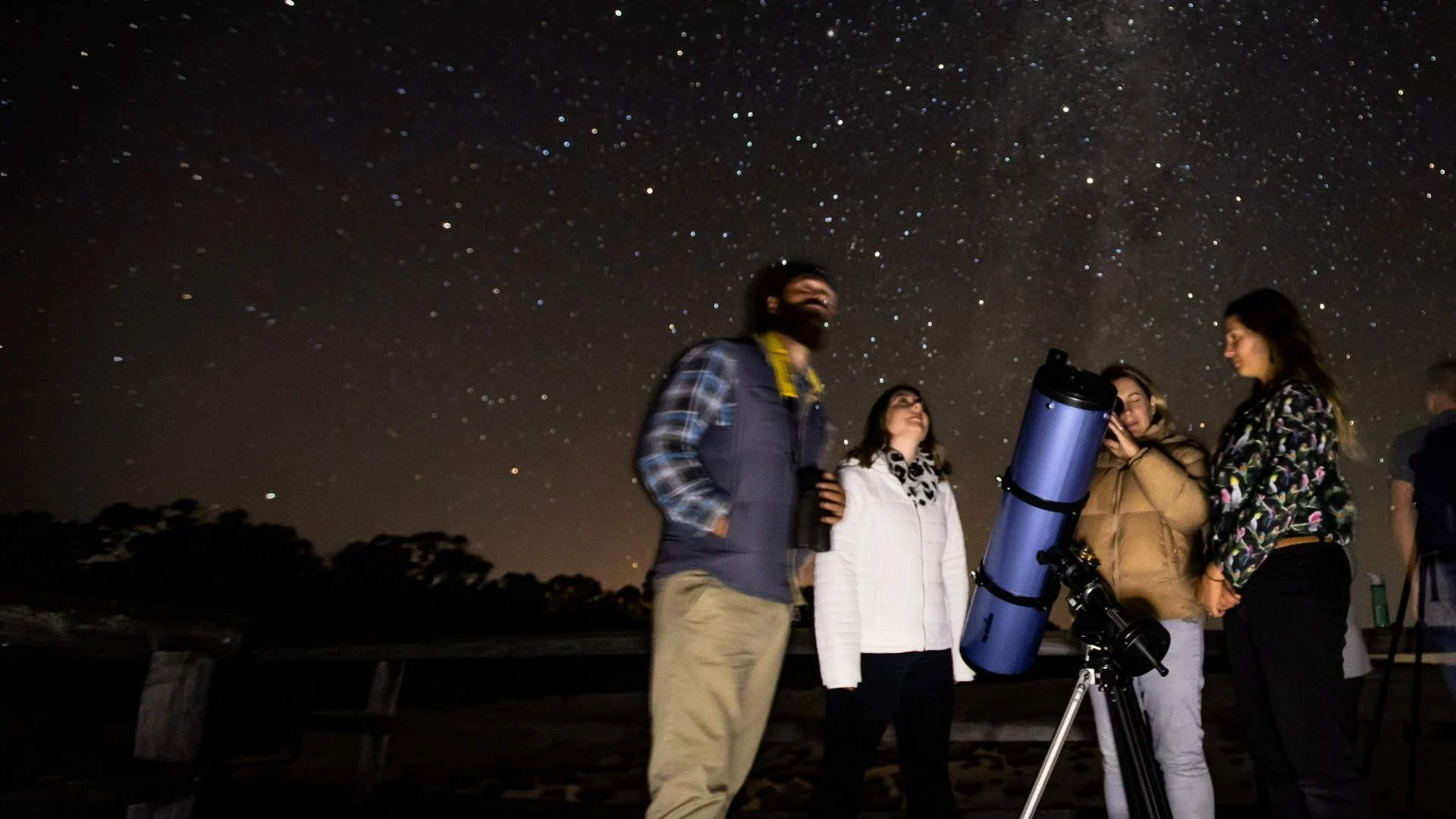Go Stargazing in Mandurah
Experience the wonder of Mandurah’s night skies! Discover the best stargazing spots, handy tips, and smart tools to explore the stars like never before.
Experience the wonder of Mandurah’s night skies! Discover the best stargazing spots, handy tips, and smart tools to explore the stars like never before.

Mandurah’s clear, dark skies offer some of the best stargazing in Western Australia. Whether you’re an avid astronomer or simply enjoy a peaceful night under the stars, the Peel Region is full of hidden gems for stargazing. From beaches to bushland and the Peel-Harvey Estuary, you don’t need to travel far to see the universe in all its glory.
Be prepared for your stargazing adventure!
Sturdy Shoes
Warm Clothing
Water Bottle
Snacks
Torch
Insect Repellent
Stargazing App
Camera
Get ready for some spectacular views. Here are our top spots to catch a glimpse of the night sky:
One of Thomas Dambo’s Giants of Mandurah, Santi Ikto is the perfect spot to watch for shooting stars while gazing out over the sea. A short walk from the car park leads you to this peaceful, stargazing haven.
Nestled at the southern end of the Peel-Harvey Estuary, Island Point is perfect for birdwatching and stargazing. With minimal light pollution, the views here are unobstructed, giving you a stunning, starry sky. The local bandicoot family might even make an appearance!
Known for its rare living fossils, Lake Clifton offers an unforgettable experience for astrophotographers. The thrombolites make for a fascinating foreground to capture the night sky. With luck, you might even spot the Southern Lights!
A charming swimming spot near Waroona, Drakesbrook Weir transforms into a stargazing paradise after sunset. Spread out your blanket and gaze up at the twinkling stars.
Famous among astrophotographers, Serpentine Dam offers a stunning view of the stars over the water. Arrive at sunset to see red-tailed black cockatoos roosting in the trees and catch a glimpse of the Milky Way.
Check out the best stargazing locations on the map. From serene lakesides to dark sky areas, these spots provide the perfect backdrop for a memorable night under the stars.
Stargazing in Mandurah can be enjoyed year-round, but to see the most stars, head out on a moonless night. The best conditions are during autumn and winter when skies are clear, and the sunsets are earlier, making it perfect for families to enjoy before bedtime.
The best time to visit is when the skies are clear, but even a little cloud won’t stop you from witnessing the beauty above. To get the clearest view, find a spot away from bright lights, like street lamps. Give your eyes a few minutes to adjust to the dark, and you’ll start seeing more and more stars.
Mandurah is a prime location for seeing a variety of cosmic wonders:
On moonless nights, the Milky Way is a stunning sight stretching across the night sky. Best viewed from dark spots like Serpentine Dam and Lake Clifton.